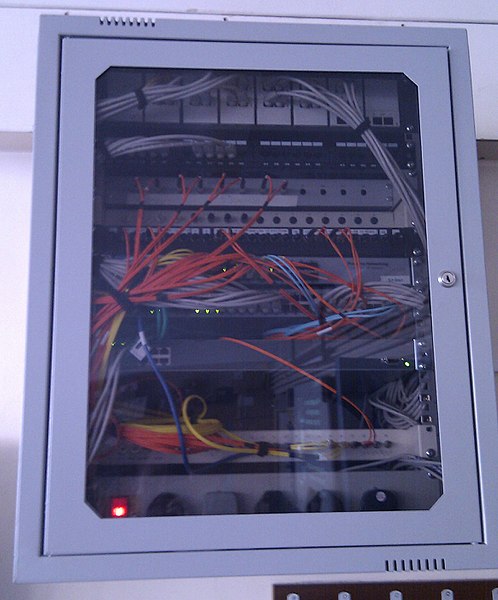A fiber-optic cable, also known as an optical-fiber cable, is an assembly similar to an electrical cable but containing one or more optical fibers that are used to carry light. The optical fiber elements are typically individually coated with plastic layers and contained in a protective tube suitable for the environment where the cable is used. Different types of cable are used for optical communication in different applications, for example long-distance telecommunication or providing a high-speed data connection between different parts of a building.
A TOSLINK optical fiber cable with a clear jacket. These cables are used mainly for digital audio connections between devices.
A multi-fiber cable
Left: LC/PC connectors Right: SC/PC connectors All four connectors have white caps covering the ferrules.
Fiber-optic cable in a Telstra pit
An optical fiber, or optical fibre, is a flexible glass or plastic fiber that can transmit light from one end to the other. Such fibers find wide usage in fiber-optic communications, where they permit transmission over longer distances and at higher bandwidths than electrical cables. Fibers are used instead of metal wires because signals travel along them with less loss and are immune to electromagnetic interference. Fibers are also used for illumination and imaging, and are often wrapped in bundles so they may be used to carry light into, or images out of confined spaces, as in the case of a fiberscope. Specially designed fibers are also used for a variety of other applications, such as fiber optic sensors and fiber lasers.
A bundle of optical fibers
A TOSLINK fiber optic audio cable with red light shone in one end
Colladon's "light fountain"
A wall-mount cabinet containing optical fiber cables. The yellow cables are single mode fibers; the orange and aqua cables are multi-mode fibers.







